|

|
Lusitani: Península de Setúbal
|
|
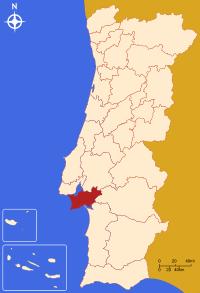
|
|
Sobre: / About:
|
| [PT] |
A Península de Setúbal é uma sub-região estatística portuguesa, parte da Região de Lisboa (antiga Região de Lisboa e Vale do Tejo), abrangendo a metade norte do Distrito de Setúbal. Limita a norte com o Estuário do Tejo (e, através dele, com a Grande Lisboa) e com a Lezíria do Tejo, a leste com o Alentejo Central, a sul com o Alentejo Litoral e a sul e oeste com o Oceano Atlântico |
| [EN] |
Setúbal Península is a portuguese statistic sub-region, which includes a part of Lisbon region (previously Região de Lisboa e Vale do Tejo – Lisbon and Tagus Valley Region), includes also the northern part of Setúbal District. It limits to north with Tagus river (through it to Grande Lisboa) and Lezíria do Tejo, to the east with Alentejo Central, to the south with Alentejo Litoral and to the south and west with Atlantic Ocean. |
| Área: 1421 km². |
| População / Population (2007): 772 405 |
| Compreende 9 concelhos /It includes 9 “concelhos”: : Alcochete, Almada, Barreiro, Moita, Montijo, Palmela, Seixal, Sesimbra e Setúbal. |
|
 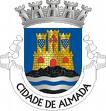   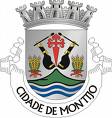   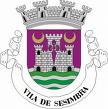 
|
| |
| Gastronomia / Gastronomy: |
| [PT] |
Com uma orla marítima de excepcional riqueza piscícola, a identidade gastronómica da região afirma-se nos pratos de peixe, de que merecem especial referência a caldeirada, a feijoada de choco, a espetada de tamboril, o choco frito e a sopa do mar. Sem esquecer a variedade de pratos de peixe assado – da sardinha e do carapau ao linguado e ao salmonete –, nem a amêijoa, o camarão e a santola, iguarias que podem ser encontradas em esplanadas solarengas. |
| Na doçaria, as tortas, os queijinhos doces e os "esses" de Azeitão gozam, igualmente, de justa fama. É também destas paragens um dos grandes queijos portugueses: o queijo de Azeitão. |
| Na região de Setúbal também são produzidos bons vinhos, com relevo para o tinto proveniente da casta periquita (castelão), com acentuado sabor a fruta. O néctar mais conhecido é, porém, o Moscatel de Setúbal, intitulado por um enólogo francês como “du véritable soleil en bouteille” (o verdadeiro sol numa garrafa). |
| [EN] |
Situated at a seaside extraordinary rich of fish species, this region gastronomy is full of fish dishes, specially “caldeirada” (composed of mix fish species), “choco frito” (fried squids) and sea soup. Also the several kinds of fish made in oven or seafood, which you can find in every restaurant in the area. |
| For dessert you can find the famous “tortas”, sweet cheese, and “esses”, all from Azeitão. Also from the same place, one of the greatest Portuguese cheese, the Cheese from Azeitão (Queijo de Azeitão). |
| In Setúbal region there are great wines, specially the red wine made from periquita grapes (castelão), with an accented fruit taste. The most known wine is the “Moscatel of Setúbal”, which a french wine specialist called “du véritable soleil en bouteille” (The true sun in a bottle). |
|
    
|
| |
| Lazer / To rest: |
| [PT] |
Ao longo da orla marítima da península de Setúbal podemos encontrar algumas das mais belas praias do pais, como por exemplo a Praia do Portinho da Arrábida, Praia da Figueirinha, Praia do Creiro, as varias praias da Costa da Caparica e da Fonte da Telha. |
| A Península de Setúbal abunda em actividades desportivas, desde a prática de Escalada (Arrábida), Surf (Costa da Caparica e Fonte da telha), Windsurf (Lagoa de Albufeira), Mergulho (Sesimbra), Pesca Desportiva... |
| [EN] |
Throughout Setúbal Peninsula seaside we can find some of the most beautiful beaches in the country, such as Praia do Portinho da Arrábida, Praia da Figueirinha, Praia do Creiro, several beaches in Costa da Caparica and Fonte da Telha. |
|
Setúbal Peninsula is full of sport activities, rock climbing (Arrábida), Surf (Costa da Caparica and Fonte da Telha), Windsurf (Lagoa de Albufeira), Diving (Sesimbra), Sport Fishing...
|
|
 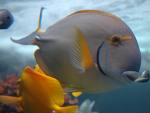   
|
| |
| A Cache/ The Cache: |
|
Ermida de S. João do Deserto
|
|
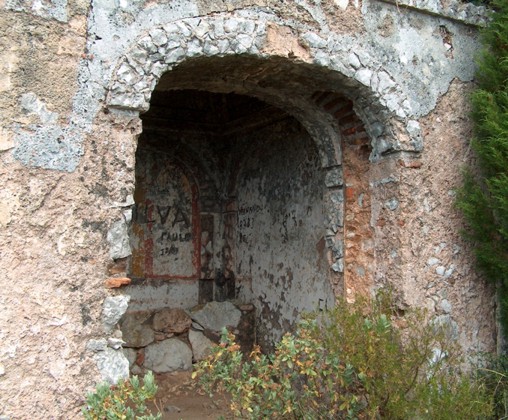
|
| [PT] |
A cache encontra-se perto das ruínas desta pequena Ermida que está situada na Mata de S. João do Deserto, local este onde os habitantes da zona plantavam várias flores e os frades na tarde de 24 de Junho, iam ali festejar o orago. |
| Na primeira metade do século XVI, entre 1539 e 1542, D. João de Lencastre (1501-1571), 1.º Duque de Aveiro, fez erguer o primitivo convento da Arrábida, doado ao franciscano espanhol Frei Martinho de Santa Maria, que ali desejava viver como eremita. Os trabalhos de edificação prosseguiram entre a segunda metade do século XVI e a primeira metade do século XVII, pela devoção do 2º e do 3º duques de Aveiro, aos quais se devem a hospedaria e as estações dos Passos da Paixão, e da nora do 3º Duque, responsável pelas capelas de São Paulo e de São João do Deserto. |
| [EN] |
This cache is placed near the ruins of this little chapel, situated in Mata de S. João do Deserto, where the inhabitants planted several kinds of flours and the monks, by June 24th at afternoon, celebrated their oracle. |
| By the first half of 16th century, between 1539 and 1542, D. João de Lencastre (1501-1571), first Duke of Aveiro, built the first Arrábida convent, which he donated to Spanish Franciscan monk Frei Martinho de Santa Maria, who wished to live there as a hermit. The building of the convent continued up to the first half of 17th century, by 2nd and 3rd dukes of Aveiro devotion, who built the inn and the stops of Passion Steps (Passos da Paixão) and also by 3rd duke daughter-in-law, who built the chapels of São Paulo and São João do Deserto. |
|
Arrábida
|
|

|
| [PT] |
A Arrábida surge na história de Portugal poucos anos após a sua fundação. Segundo a lenda, o Vale da Vitória deve o seu nome à batalha ganha por D. Afonso Henriques aos mouros no ano de 1165, por altura da conquista do castelo de Sesimbra. |
| Os vários sítios arqueológicos existentes na serra mostram que houve ocupação humana em diversas épocas tais como: época Romana, idade do Ferro, idade do Bronze e Paleolítico. Deste período, assume particular importância a Gruta da Figueira Brava, que se tornou uma referência internacional após a descoberta de alguns dos últimos vestígios do Homo de Neanderthal (30.000 AC) e de uma enorme variedade de ossos de animais. Foram encontrados ossos de mamute, leão das cavernas, pantera, urso pardo, hiena, rinoceronte, pinguim gigante, foca do árctico, etc, o que indica que a gruta terá sido uma espécie de lixeira pré-histórica. |
| A Arrábida tem também um património natural muito valioso, não só do ponto de vista geológico mas também pela fauna e pela sua flora mediterrânica que constitui um dos últimos vestígios existentes de uma floresta pré-glaciária sul europeia.a. |
| O enquadramento da serra com o mar, o contraste das cores azul e verde, proporciona uma paisagem de rara beleza que contribuiu para a entrada da Baía de Setúbal, em 2002, para o Clube das Mais Belas Baias do Mundo." |
| [EN] |
Arrábida appears in the History of Portugal a few years after the country foundation. According to the legend, the Valley of Vitória (which means "victory") owes its name to the battle won by the first portuguese king, D. Afonso Henriques, against the Moors in the year of 1165, by the time of the conquest of Sesimbra castle. |
| |
The several archaeological sites in the mountains show that there was human occupation in several eras such as: the Roman period, the Iron Age, Bronze Age and the Paleolithic. From this period, has particular importance the Cave of Figueira Brava, which became an international reference after the discovery of some of the last traces of the Neanderthal (30,000 BC) and a huge variety of animal bones. There were bones of mammoth, cave lion, panther, brown bear, hyena, rhinoceros, giant penguin, seal the Arctic, etc., indicating that the cave was a kind of pre-historic trash. |
| |
Arrábida has also a great natural heritage, not only from the geological point of view but also because of its fauna and specially its Mediterranean flora which is one of the last existent traces of southern Europe pre-Ice Age forest. |
| |
The mountain's location by the sea, the contrast between blue and green colours, offers a landscape of rare beauty that allowed the Bay of Setúbal to join, in 2002, the Most Beautiful Bays of the World Club. |
| |
|
|
[PT]
|
A descoberta desta cache leva-nos a um passeio pela maravilhosa Serra da Arrábida, com um tempo médio de caminhada de 1 hora.
|
| Divirtam-se e apreciem este belo passeio pela Serra da Arrábida. |
|
[EN]
|
The discovery of this cache will take you to a walk by wonderful Arrábida Mountains, and you can take about 1 hour.
|
| Have fun and enjoy this beatiful trip through Arrábida Mountains. |
|